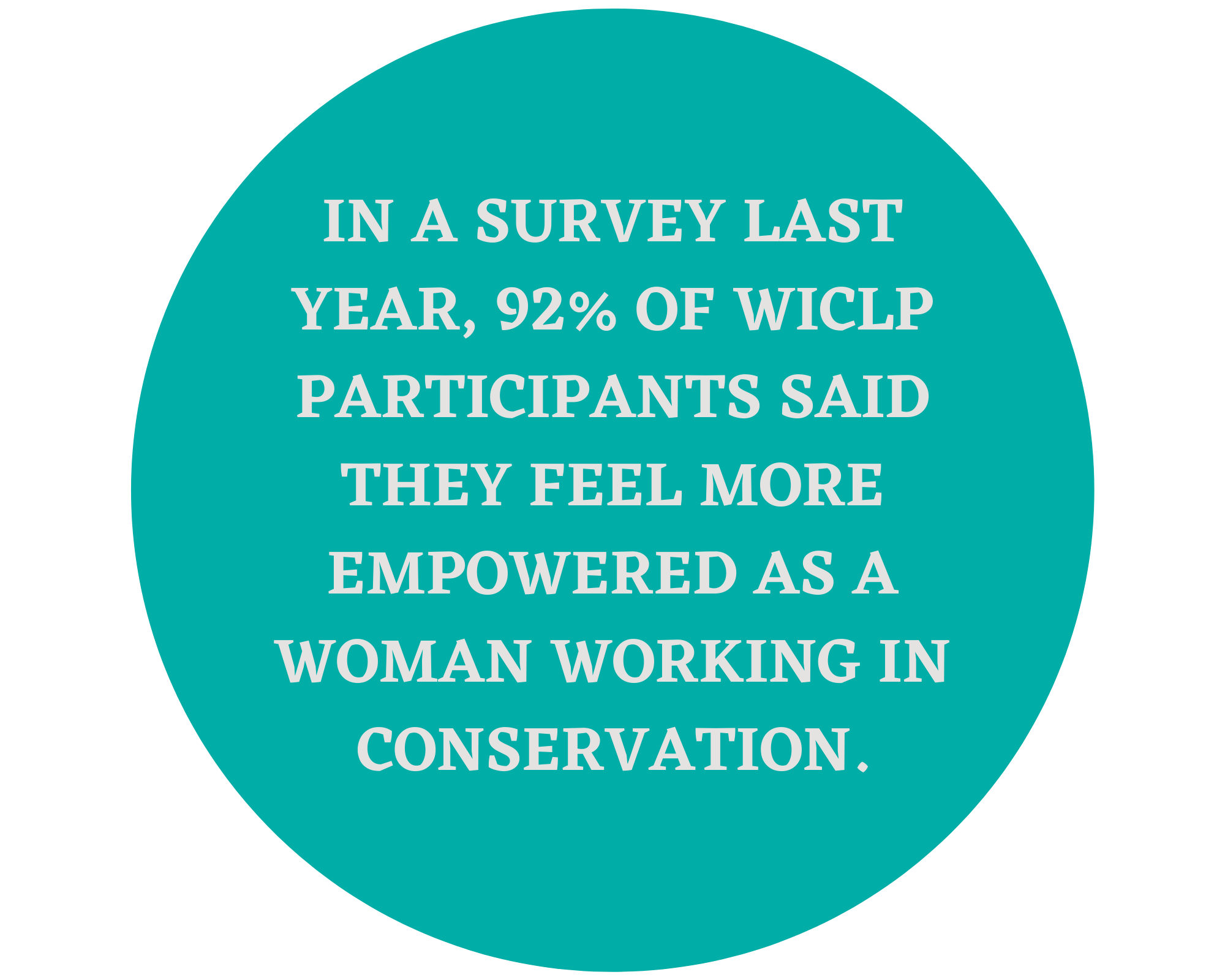International Women’s Day 2022: ASAP Women in Conservation Leadership Programme (WiCLP)
 Due the pandemic, our first cohort of WiCLP participants have yet to meet in-person, and this was the closest
Due the pandemic, our first cohort of WiCLP participants have yet to meet in-person, and this was the closest
we could get to a proper wefie! We look forward to the day when we can finally all meet in person.
“The only way to solve a multidimensional problem like biodiversity loss is to ensure that all stakeholders have a seat at the table – women, young people, and people from all geographies,” said Razan Khalifa Al Mubarak in an interview with Mongabay published in August 2021. The following month she was elected as IUCN President, the first woman from the Arab world and the second woman to ever hold the title in the organisation’s 73 years.
Despite advances in inclusivity and diversity, women’s voices continue to be underrepresented in the conservation sector across multiple levels, from grassroots to government [1]. Whilst the inclusion and active participation of women is linked with improved conservation outcomes, women continue to face gender-related workplace challenges such as gender pay gaps and sexual harassment, while often having additional challenges in balancing work and family responsibilities. The COVID-19 pandemic has further blurred the lines between home and work, disproportionately impacting women [2].
In many Southeast Asian contexts, societal pressure and expectations often demand that women play larger roles surrounding family and household duties. A 2019 study addressing challenges faced by Indonesian women conservationists reported traditional and religious gender norms, especially the social expectations of a woman’s role at work or home, as major hurdles in their chosen conservation career [3]. A 2020 survey conducted by WildAct in Viet Nam found sexual harassment behaviour to be prevalent in the conservation sector, with 6 out of 7 women having experienced sexual harassment in the workplace [4].
 Due to the unique obstacles faced by women, support for their involvement in conservation management and leadership needs to be proactively developed. Empowering individual women to lead, strengthening their knowledge, skills, confidence, and resilience, and building a network of peer support, are crucial pillars for women’s leadership development. Recognising this need, ASAP launched the ASAP Women in Conservation Leadership Programme (WiCLP) in 2021.
Due to the unique obstacles faced by women, support for their involvement in conservation management and leadership needs to be proactively developed. Empowering individual women to lead, strengthening their knowledge, skills, confidence, and resilience, and building a network of peer support, are crucial pillars for women’s leadership development. Recognising this need, ASAP launched the ASAP Women in Conservation Leadership Programme (WiCLP) in 2021.
Fourteen women from six countries across Southeast Asia working to conserve ASAP species joined the first WiCLP cohort. The programme provides targeted training, and opportunities for peer-to-peer learning and networking, to strengthen management and leadership capabilities. ASAP also works with each individual to help champion their work and support their efforts. The participants come with a diverse range of experience and focus, but all share a deep commitment to the conservation of threatened species.
 The programme also explored stakeholder and conflict management topics, effective communication, and what it means to be a leader in conservation. This helped participants see conflict and resolution as a way for growth in an organisation, create communication plans and align them with their organisation’s communication strategy.
The programme also explored stakeholder and conflict management topics, effective communication, and what it means to be a leader in conservation. This helped participants see conflict and resolution as a way for growth in an organisation, create communication plans and align them with their organisation’s communication strategy.

The WiCLP provides a safe space and platform for participants to share and confide about their experiences and challenges as women working in conservation in Southeast Asia. The programme was designed not only to strengthen management and leadership capabilities, but also build confidence and resilience to stay and succeed in conservation for the long-term. Shifting approaches from learning on-the-job to being readily equipped with knowledge, skills, and a professional support network, participants can move away from self-limiting beliefs to feeling more competent, empowered and ready to lead. Being a part of a group which consists of inspiring, talented and passionate women, WiCLP participants no longer need to struggle in isolation, but can confidently reach out to each other and to ASAP.

Women’s inclusion and participation is key to effective conservation. Appropriate levels of female representation in senior conservation positions can help other women and girls feel connected, increase their engagement in society, and inspire future generations to take the baton. While there are still challenges to be overcome, we hope the WiCLP will lay the first bricks of the foundation for a stronger, more equitable and resilient future.
As we celebrate International Women’s Day, we want to honour these amazing, smart and passionate women working hard to #BreaktheBias and halt species extinctions across the region. We look forward to continuing the learning and journey together in 2022. 
- Find out more about our WiCLP participants and their work here.
[1] Jones, M. S., & Solomon, J. 2019. Challenges and supports for women conservation leaders. Conservation Science and Practice, 1(6), e36. Available here.
[2] Yavorsky, J. E., Qian, Y., & Sargent, A. C. 2021. The gendered pandemic: The implications of COVID‐19 for work and family. Sociology Compass, 15(6), e12881. Available here.
[3] Poor, E. E., Imron, M. A., Novalina, R., Shaffer, L. J., & Mullinax, J. M. 2021. Increasing diversity to save biodiversity: Rising to the challenge and supporting Indonesian women in conservation. Conservation Science and Practice, 3(6), e395. Available here.
[4] WildAct Vietnam. 2020. Attitude towards sexual harassment in Vietnam’s conservation sector. Available here.

